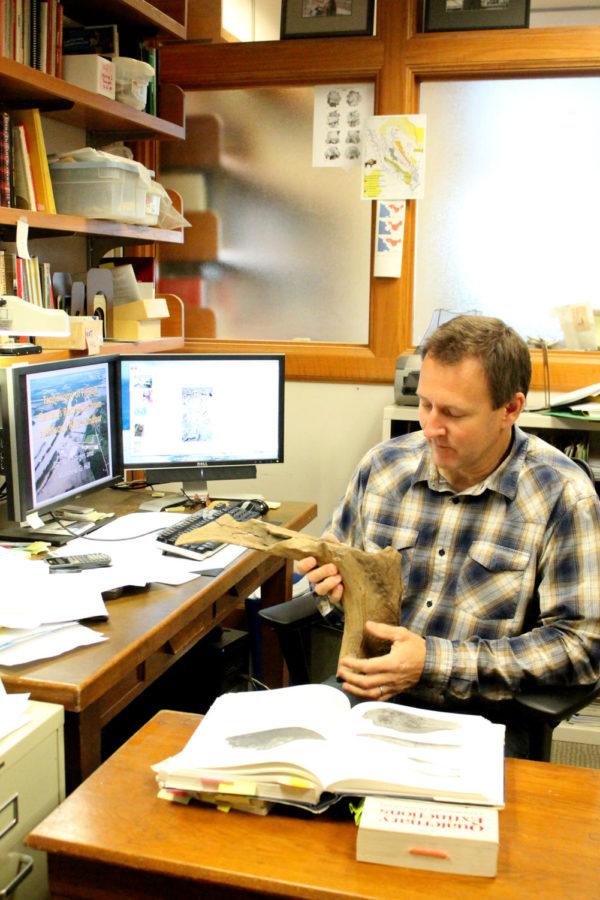Professor uses specimens of extinct stag-moose to uncover new information
October 2, 2013
In 2008, Matthew Hill, associate professor of anthropology, received a call from an Ames man that led the professor to a major archaeological discovery.
The man had been walking along Skunk River when he found a fragment of a strange-looking antler. He called Hill to identify what kind of animal it came from.
These calls are a common occurrence for Hill, said Paul Lasley, chairman of the anthropology and sociology departments.
“He gets several calls a year,” Lasley said. “People find bones, and they don’t know what they are, so it ends up on his desk to identify them.”
Hill said he knew this antler was different the moment he saw it.
“You have this idea of what you should see, and then when something doesn’t fit into that reference, you start to raise flags,” Hill said. “I knew it wasn’t a bison; I knew it wasn’t a caribou, so I started leaning toward moose. And I thought, this is not a regular moose.”
Hill said he started to suspect it was the antler of a stag-moose — an animal that went extinct more than 10,000 years ago. He sent pictures of the specimen to a colleague at Illinois State.
After comparing the picture to other stag-moose antlers, they confirmed his suspicions.
A stag-moose is an extinct ancestor of the moose common today. Hill said it is an unusual-looking creature: slightly larger than a moose, with long legs and the face of an elk.
Its truly distinctive feature, however, are its large, intricate antlers.
“The antlers are goofy. The shaft goes straight out from the side of the head for a ways, and then develops into two or three palms that sprout multiple tines,” Hill said.
After finding the Ames specimen, Hill located other antlers found in Iowa. One was found in Jester Park, and the other was found near Parkersburg. Hill decided it would be interesting to find out exactly how old they were.
Using a grant from the College of Liberal Arts and Sciences, he sent a piece of each antler to Arizona for radiocarbon dating.
The process took a little less than a month, and the results, Hill said, exceeded his wildest expectations.
The antler from Parkersburg was dated at 30,000 years old, making it the oldest stag-moose antler in North America. The antler from Jester Park was about 12,800 years old, making it the youngest specimen in North America. The Ames antler was 13,400 to 13,700 years old.
The wide spread of the dates reveals several facts about the specimens.
Between 30,000 and 12,800 years ago, glaciers covered Iowa. During this time, stag-moose, along with many other animals, moved south in search of better habitat. The date of the youngest stag-moose shows they returned to Iowa and other states after the glaciers retreated.
That means that stag-moose could have interacted with early human civilizations.
“It is a virtual certainty that those animals were on the landscape the same time the first people began to move into Iowa,” Hill said. “So it’s very possible that stag-moose fell prey to the Clovis hunters. We don’t have any evidence for that, but it was a potential food resource for those early hunters.”
After the success of dating these first three specimens, Hill said he is enthusiastic about continuing his research.
“I would like to date a couple more specimens in Iowa and then begin to document the location of these animals — where they’ve been found and the type of locations,” Hill said.
This will help him discover more about the stag-moose species: how they died out, how they interacted with humans and much more.


















Steve R. | Jul 21, 2023 at 7:00 am
I’m not 100% sure, but I think that I may have found a stag moose antler just yesterday.